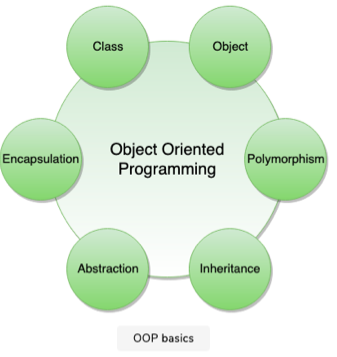Low Level Design Basics
Object-Oriented Programming
- Object-Oriented Programming: A style of programming that focuses on using objects to design and applications.
- Procedure-Oriented Programming: Programs are designed as blocks of statements to manipulate data.
-
OOP organizes the program to combine data and functionality and wrap it inside object.
- Object: Represents a real world entity and the basic building block of OOP.
- Example: Online Shopping System - Shopping Cart, Customer, Product Item are some of objects.
- Class: Prototype or blueprint of an object. Template definition of the attributes and methods of object.
- Example: Online Shopping System - Customer Object will have attributes like name, shipping address, cards etc.. and methods for placing order, cancel order etc.

4 Principles of Object-Oriented Programming
- Encapsulation:
- Mechanism of binding the data together and hiding it from outside world.
- Achieved when each object keeps its state private so that other objects don’t have direct access to its state.
- This state can only be accessed through a set of public functions.
- Abstraction:
- Can be thought as a natural extension of encapsulation.
- It means hiding all but the relevant data about an object to reduce the complexity of the system.
- In a large system, objects talk to each other, which makes it difficult to maintain a large code base.
- Abstraction helps by hiding internal implementation details of objects and only reveals operations that are relevant to other objects.
- Inheritance
- Mechanism of creating new classes from existing ones.
- Polymorphism
- It is the ability of an object to take diffferent forms.
OO Analysis and Design
- A structured method for analyzing and designing a system by applying object-oriented concepts.
- An investigation into the objects constituing the system.
- Starts by first identifying the objects of the system and then figuring out the interactions b/w the various objects.
Process of OO Analysis and Design
- Identifying the objects in the system.
- Defining the relationship b/w objects.
- Establishing the interface of each object.
- Making a design that can be converted to executables (code) using OO languages.
Standard Method / Modeling Tool to document all these informations
- We use UML (Unified Modeling Language) to document/ model these informations.
- UML can be considered as the succesor of the OO Analysis and Design.
- Powerful enough to represent all the concepts that exists in OO Analysis and Design.
- UML diagrams are representation of OO concepts.
Next: Unified Modeling Language (UML) →